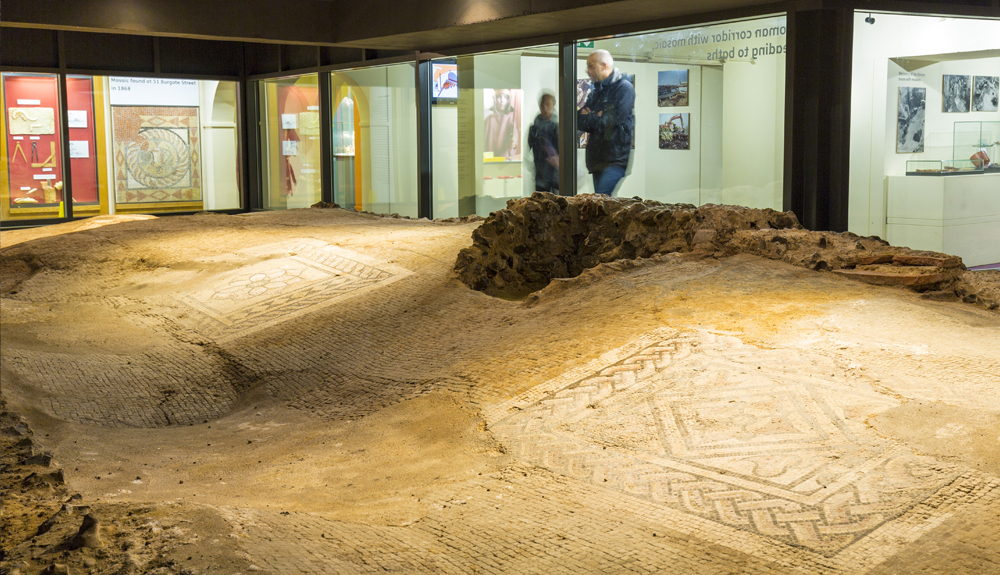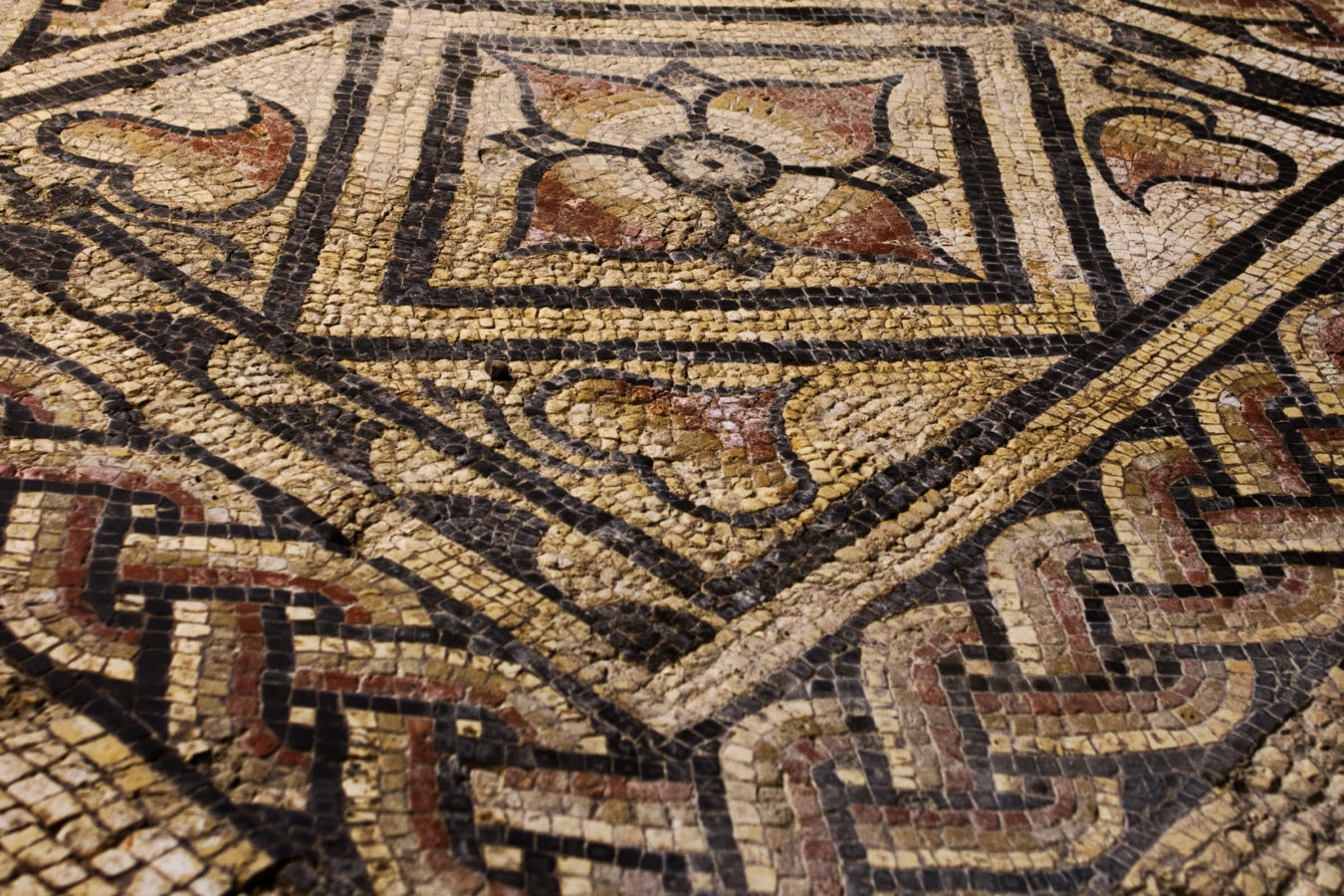
Mosaics
Mosaics are patterns or pictures made from lots of small different coloured stones or tile cubes...
Its owner no doubt hoped for safer days to return. However, for whatever reason the owner didn’t return and the treasure lay unclaimed for 15 centuries, only to be found by chance during roadworks in 1962.
Included in the hoard is a selection of exquisite silver spoons with duck or swan handles. One of the spoons includes a very rare figure of a sea-stag engraved on the bowl and another inscribed with ‘viribonum’ (I belong to a good man).
Another item, inscribed with ‘PX’, the Chi Rho symbol for Christ’s name in Greek, may have been a tooth pick, shellfish opener, or knife for cutting bread or wafers in a religious ceremony.
The Chi-Rho (pronounced “KEE-roe”) symbol is a Christian symbol consisting of the intersection of the capital Greek letters Chi (Χ) and Rho (Ρ), which are the first two letters of “Christ” in Greek (ΧΡΙΣΤΟΣ, Christos). The Chi-Rho can represent either Christ or Christianity and is also known as a Christogram.
It was used very early on by persecuted Christians in the catacombs. Later, when Constantine was struggling to become emperor, he lifted this symbol at the front of his victorious armies. The Chi-Rho is since also known as the labarum, which is based on the Latin word laureum, “military standard“.
The chi-rho appeared on the coins of Constantine and his Christian successors, sometimes alone and sometimes as part of a military standard as described by Eusebius. It continues to be widely used today.
Christianity was adopted by the Empire in AD 313. Symbols of the faith – such as the cross, a fish, and a monogram of letters from Christ’s name – would have been used in the churches of Roman Canterbury. These symbols however, represent Christian visual art prior to 313 AD, when Emperor Constantine legalized Christianity. During this time, the cross is seldom seen, except disguised in some way as an anchor, a trident, or the mast of a ship. Instead, Christians used a variety of other symbols, such as the Chi Rho mentioned above.

